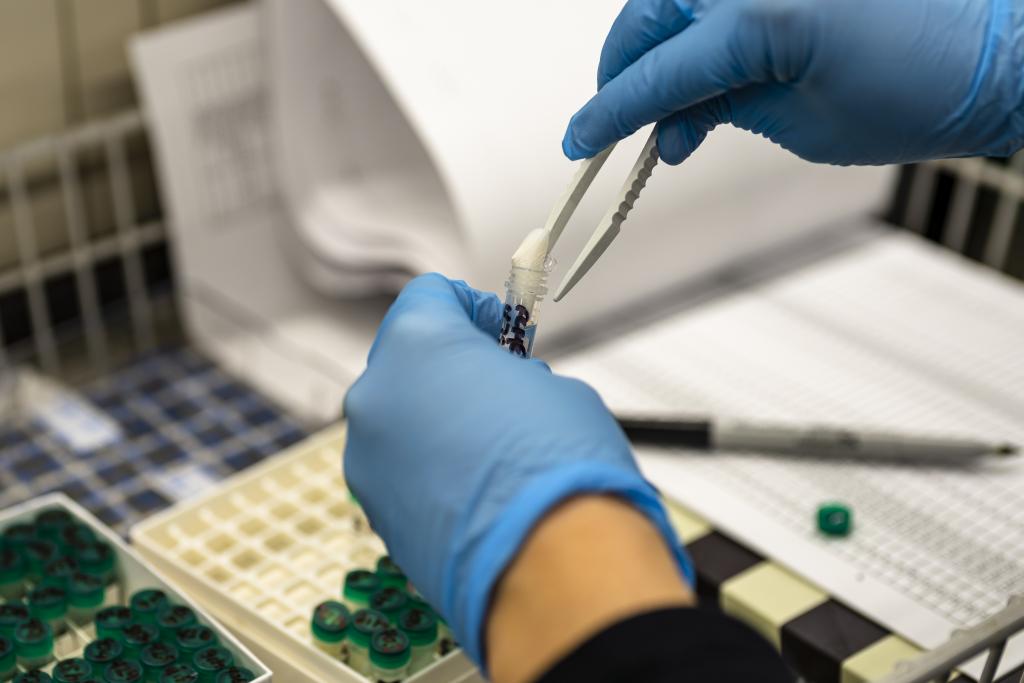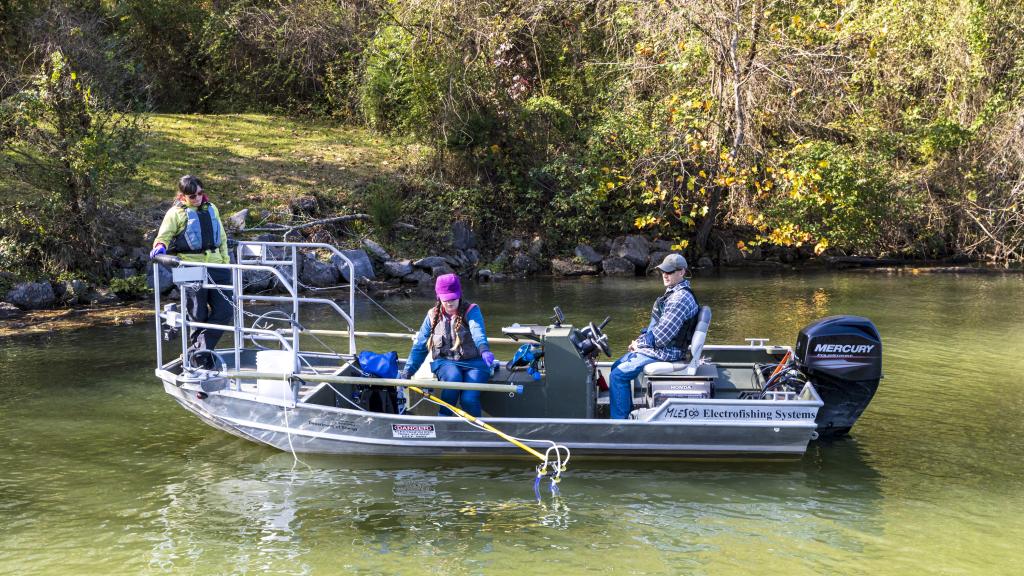
Overview/Objective
Researchers at the US Department of Energy’s Oak Ridge National Laboratory (ORNL) are exploring the collection of environmental DNA (eDNA) and environmental RNA (eRNA), a cutting-edge form of biomonitoring that could simplify the licensing process for hydropower operators by dramatically improving the speed and accuracy of required environmental assessments at a much lower cost.
The goal is to create a robust eDNA/eRNA collection system that can supplement or, in certain cases, supplant conventional biomonitoring techniques like netting, trapping and electrofishing. These conventional techniques are intrusive, labor-intensive and expensive processes that require sending skilled professionals out to the field to catch the organisms to obtain DNA samples from their tissues. To get a more comprehensive sense of the species populating aquatic habitats, monitoring teams also must go out to the field on multiple occasions and still may not get truly representative results. Such methods can be ineffective at detecting rare or elusive species and can be harmful to organisms that are threatened with extinction by further reducing the already small number of individuals in existence.
By contrast, eDNA and eRNA samples are collected from water, not the organism itself, minimizing the impact on species and habitats. This alternative approach is possible because fish and other organisms shed their DNA and RNA into the water through excreting waste, reproduction, or decay. Once the samples are collected, researchers are then able to sequence these genetic materials and compare them with a database of known species to identify which organisms are living in and near the water. The advantage of eDNA is that it has a stable molecular structure and therefore persists in the environment, making it a reliable detector of species. However, this longevity, in combination with DNA secretions from decomposing organisms, can result in conflation of true species presence and historical species detection. That is not the case with eRNA, which is shed only by living organisms and has an unstable molecular structure, and can thereby provide insight into which animals and organisms have recently been present in a given habitat.
The team at ORNL has conducted a series of increasingly complex experiments to determine how eDNA and eRNA samples might be most effectively used. Their approach combines advanced genomics, high-performance computing, modeling, and automation to evaluate, refine and expand upon the use of eDNA and eRNA with the aim of developing new, transformative protocols and technologies tailored to the needs of the hydropower industry.

Results
The project began in 2020, when researchers at ORNL and the Tennessee Valley Authority began a three-year pilot study comparing the efficacy of eDNA collection to conventional surveying methods. The study was conducted at four locations at a dam about seven miles south of the ORNL campus, the Melton Hill Reservoir, which is owned and operated by the TVA. Researchers took water samples from fall 2020 to spring of 2021, sequenced the environmental DNA, and benchmarked it against 30 years of conventional survey data maintained by the TVA.
The initial findings confirmed the effectiveness of eDNA, successfully detecting common fish species known to be present at Melton Hill, as well as unknown or low abundance species that had not previously been detected by conventional methods. The study suggested that eDNA surveys could be combined with conventional sampling to provide more comprehensive characterization of aquatic biota.
In the fall of 2022, the ORNL team launched a follow-up project, a collaboration with the Michigan Department of Natural Resources. During this phase, researchers wanted to find out if eDNA and eRNA could be sampled from the fast-running water that flows through fish ladders, bypass structures designed to help fish safely navigate around hydropower facilities, which would otherwise act as a physical barrier to their movements up or downstream. The team also wanted to find out if either eDNA or eRNA samples could be used to estimate which species are active users of the fish ladders and how many individual fish go through the passages over a given time period. After collecting samples from fish ladders on two rivers in southern Michigan, the St. Joseph and the Grand, the team demonstrated that eDNA and eRNA could be used in more turbulent, higher-velocity aquatic environments like fish ladders to determine which species are moving through a fish ladder and an approximation of how many individual fish went through. The study also showed that eRNA outperformed eDNA in such settings.
The project went into its third phase over 2024, with the commencement of a new collaboration between ORNL, TVA and the Electrical Power Research Institute (EPRI). During this phase researchers wanted to find out if water samples containing eDNA and eRNA could be used to identify and enumerate organisms other than fish, like mussels, amphibians and aquatic plants. The chosen testing ground was a hard-to-access stretch of the Hiwassee River in western North Carolina. The site’s remoteness make conventional biomonitoring and surveying there particularly difficult.
In 2025, ORNL researchers will take the sum of their findings from previous iterations of this project and test their methods on a system of great scope, complexity and dynamism in Washington State, at dams along the Columbia River and one of its key reservoirs, a 130-mile-long body of water called Franklin D. Roosevelt Lake. The aim is to provide yet more foundational information about fish passage efficacy, insight into how eDNA/eRNA particles flow through river systems impacted by hydropower, and better modeling for aquatic organism enumeration.
Impact
Identifying species changes in hydropower-regulated systems will ultimately lead to smarter, more environmentally-friendly facility operations and designs. The team also recently patented a design for robotic eDNA/eRNA collector and sampler that will be able to work autonomously and continuously in the field and send a real-time feed of results to operators, a technology that could revolutionize biomonitoring and surveying.
The novel methods of eDNA and eRNA sampling can be used in multiple applications to do the following:
- Rapidly measure biodiversity
- Detect invasive species
- Detect environmental change
- Detect toxic algal blooms
- More effective management of fisheries
- Sample difficult-to-access environments
- Determine watershed scale processes and interactions
- Uncover pollutants
If you are interested in learning more about this project or the technologies involved, please contact the lead researcher, Kristine N. Moody, at moodykn@ornl.gov.


